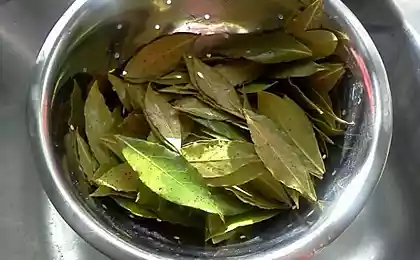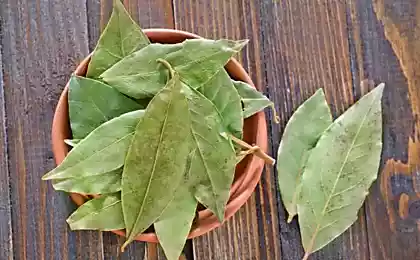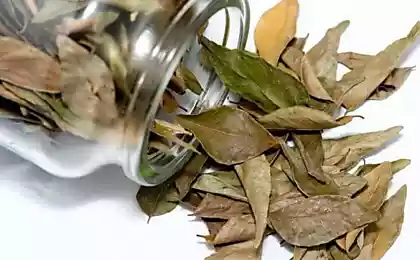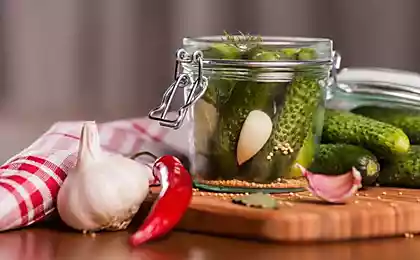573
The unusual properties of Bay leaf
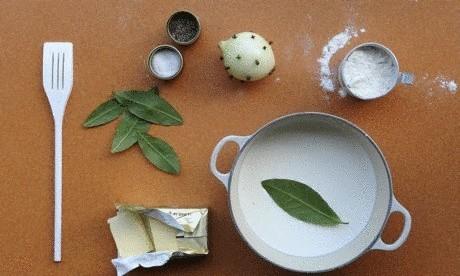
Pleasant aroma of Bay leaf caught the fancy of chefs. It originates from Asia Minor, then spread to the Mediterranean and Asia. Bay trees reach ten meters in height. They bloom in early spring. The Laurel flowers are yellow or greenish-white color, and berries — in various shades from dark green to purplish. Laurel leaves are elliptical, glossy, dark green and reach a length of 7.5, and even 10 centimeters. Bay leaves not only give the dish a unique flavor, but also very useful for health.
It should be remembered that not everyone useful those or other products, including those that are considered elements of a healthy diet. In all cases it is advisable to contact the specialist dietitian sensing information from the Internet only as a reference and informative instead of relying on her health.
Seasoning are withered and dried Bay leaves with a strong flavor, which can be stored for several months. Dried Laurel fruits are also used in cooking as a flavoring.
Useful properties of Bay leaf and interesting facts about thisBay leaf was revered in the Greek and Roman civilizations. It was considered a symbol of wisdom, peace and protection.
As a spice, it contains compounds, minerals and vitamins necessary for health.
It contains (in the form of spices) many volatile active components, including α-pinene, β-pinene, myrcene, limonene, linalool, methylchavicol, neral (CIS-isomer of citral), α-terpineol, geraniaceae, eugenol and chavicol. These compounds are known for their antiseptic and antioxidant properties, promote digestion. It is also believed that they have anti-cancer properties.
Fresh Bay leaves are very rich in vitamin C. In 100 grams contains 46,5 mg, which is 77.5% of the daily allowance. Vitamin C (ascorbic acid) is one of the most powerful natural antioxidants, helps to eliminate the body of harmful free radicals. Ascorbic acid also enhances immunity, has antiviral and wound healing effect.
Fresh Bay leaves and other parts of the plant are also rich in folic acid, containing 100 grams of 180 mg or 45% of the recommended daily allowance. Folate is important for DNA synthesis taken preconceptional period, they help prevent neural tube defects in the baby.
Bay leaves are a good source of vitamin A. 100 grams of Bay leaves contains 6185 international units (IU, IU), i.e. 206% of the daily allowance. Vitamin a acts as a natural antioxidant and important for healthy vision. It is also required for maintaining healthy mucus membranes and skin. It was discovered that eating natural foods rich in vitamin A, helps to protect from lung cancer and oral cavity.
This spice is a good source of many vitamins, including Niacin, pyridoxine, Pantothenic acid and Riboflavin. These B vitamins contribute to the synthesis of enzymes, functioning of the nervous system and regulation of metabolism (metabolism).
This exquisite spice is also a good source of several minerals, particularly copper, potassium, calcium, manganese, iron, selenium, zinc and magnesium. Potassium is an important component of cell and body fluids that contribute to the control of the cardiac pulse and blood pressure. Manganese and copper are factors that contribute to the action of an enzyme in the body-antioxidant called superoxide dismutase. Iron is essential to produce red blood cells and is a co-factor for cytochrome oxidase enzymes.
The use of Bay leaves in medicineMedicine uses benefits of Bay leaves and berries of Laurel, its astringent, diuretic qualities and the ability to increase the appetite.
The oil in Bay leaves contains mostly cineol (evkaliptola) — 50%. And also, eugenol, chavicol, acetylamino, methyleugenol, α - and β-pinene, phellandrene, linalool, geraniol and terpineol.
Extract of Laurel enjoys a reputation as a means of soothing the stomach and relieving flatulence and colic.
Lauric acid from Laurel leaves is repellent, repel insects.
Components of the oil of Laurel leaves is also used in folk medicine as a treatment for arthritis (inflammation of joints), muscle pain, bronchitis and flu symptoms.
The collection and storage ofTraditionally collected leaves are dried in the shade, protecting them from direct sunlight to preserve the volatile oils.
In the departments of spices may be sold to a different Bay leaves. Including completely dried, crumbled, dry-frozen and powdered form. Avoid leaves with an unpleasant odor, spots and affected by fungus.
Keep the Bay leaves in a jar or container in which there is no access of air. Avoid storing them in a bright place. Bay leaves are not stored for more than a year, then they lose flavor. Dried Laurel fruits can also act as a flavoring for food.
Use Bay leaf in cooking,Glossy dark green leaves can be used fresh. But it is better to let them lie down in the shade for a few days. Because of this they will take the bitterness, but the flavor will remain.
If you find the food a Bay leaf, put it aside and not eat. They have a leathery texture, tough and dangerous for chewing and swallowing. Their task is to give food its flavor, is not recommended.
Bay leaf is among the herbs that are used in cooking, along with thyme (thyme), sage, savory, celery, Basil and other herbs. They are also known under the name "the bouquet Garni and used in the form of a bundle of herbs added to the dish.
This spice is used in cooking common cooking Kurt-broth (court bouillon), which is based on water, salt, white wine, vegetable flavors (onion and celery), and flavored with bouquet Garni and black pepper.
Dried Bay leaves are added to herbal tea.
Bay leaves are an important ingredient in many classic sauces, including tomato bread and dips, and the famous Bechamel.
Bay leaves are used in cooking seafood, poultry, meat, rice (e.g., pilaf) and vegetable dishes.
They are also used for flavoring sweet dishes, including sweet breads and custards.
PrecautionsBay leaves strictly should be removed from food before serving as they can cause choking, cutting, language, and damage the digestive tract. You should avoid eating dishes using Bay leaf during pregnancy because chemical compounds can cause a miscarriage.
The nutritional value of Bay leafIn parentheses are the percentage of the daily allowance. Nutritional value is based on 100 grams of Bay leaf according to information from the Ministry of agriculture of the United States.
General information:
energy value — 313 kcal (15.5 percent);
carbohydrates — 74,97 grams (57%);
protein — 7.61 grams (13%);
fats — 8.36 grams (29%);
cholesterol — 0 milligrams (0%);
fiber — 26.3 grams (69%).
Vitamins:
folate is 180 micrograms (45%);
nicotinic acid — 2,005 milligrams (12.5 percent);
pyridoxine (vitamin B6) — 1,740 milligrams (133%);
Riboflavin (vitamin B2) — 0,421 milligrams (32%);
vitamin A — 6185 international units (IU, IU) is 206%;
vitamin C — 46.5 milligrams (77,5%);
Electrolytes:
sodium 23 milligram (1,5%);
potassium 529 mg (11%).
Minerals:
calcium 834 mg (83%);
copper — 0,416 milligrams (46%);
iron — 43 milligrams (537%);
magnesium 120 mg (30%);
manganese — 8,167 milligrams (355%);
phosphorus 113 milligrams (16%);
selenium is 2.8 micrograms (5%);
zinc — 3,70 milligrams (33%).
Source: hi-news.ru
